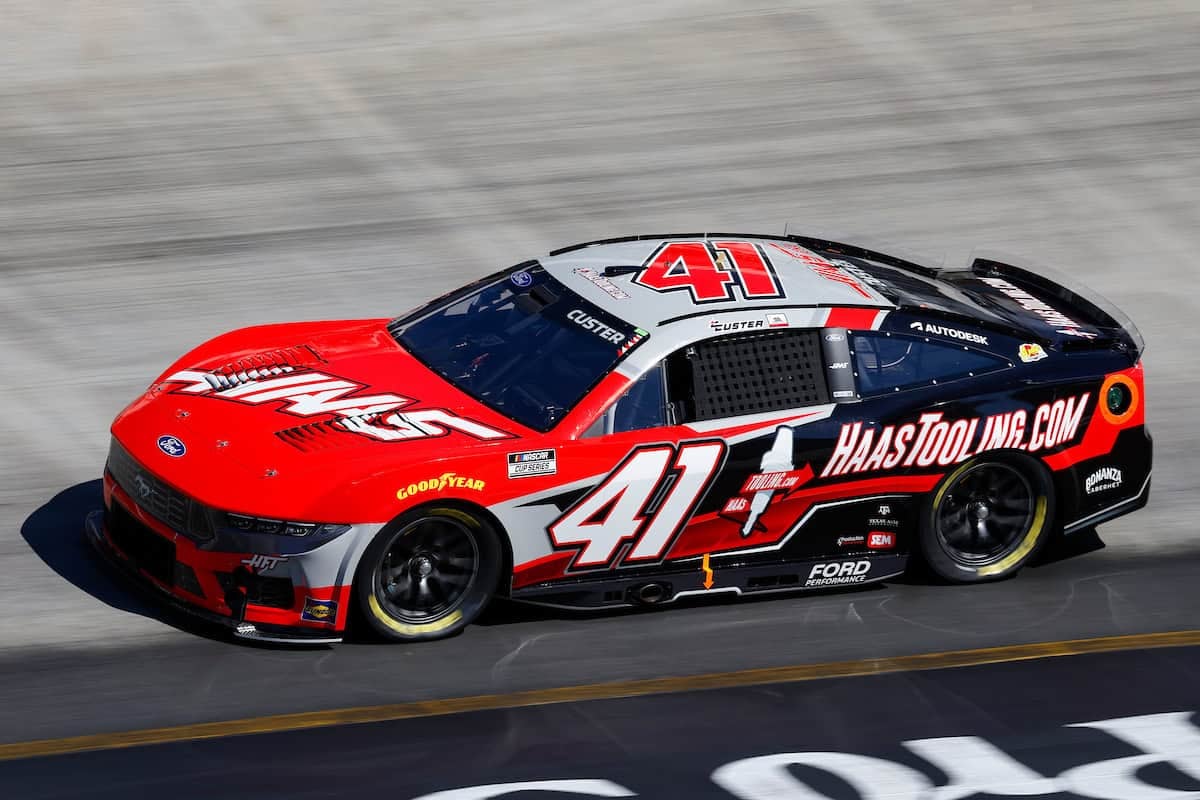With the way that NASCAR determines its champions likely to change for 2026 and beyond, there still exists an enormous level of angst concerning the sins of the current playoff format that is exacerbated with almost every development during this year’s playoffs.
To no one’s surprise, one of those sins came to light at the end of last week’s elimination race at the Charlotte Motor Speedway ROVAL, when a familiar issue in cutoff races once again came to light.
Among the issues inherent with the finish at the ROVAL were the actions of two particular teams, those of Cole Custer and Alex Bowman. Both elected not to make passes that could have jeopardized the playoff positions of fellow Ford driver Joey Logano and fellow Chevy driver Ross Chastain, respectively.
After Custer followed Logano through traffic and made one attempt to pass him in turn 7 with four laps to go, spotter Andy Houston appeared to receive a coded message — “You got your watch on?” — with three laps to go. Then Custer was told to take it easy and save his tires for a potential late-race restart with Logano in striking distance out his windshield.
Custer never made a serious effort to challenge Logano for position again.
The message over Custer’s radio to save tires for a late-race restart managed to fit the plausible-deniability bill well enough. Bowman’s team didn’t quite do their job well enough in that regard, reminding Bowman to save his tires on the last lap as he closed in on Chastain for position. Bowman, like Custer, proceeded to stand down and not race Chastain for position.
While this week’s episode of Hauler Talk shared that NASCAR believed the radio communications did not rise to the level where penalties were necessary, a familiar dread has set in that team/OEM orders and race manipulation are yet again going to be a part of the race for the championship.
This, even after a controversial finish at Martinsville Speedway last year that incensed NASCAR enough to hand out $600,000 in fines, suspend nine people, and add language to its rule book giving them the authority to penalize its OEMs — Chevy, Ford or Toyota — if NASCAR believe they manipulated a race to the benefit of one of their teams.
Given the fallout from Martinsville last year, it’s disappointing that NASCAR’s reaction evidently was not enough of a deterrent to stop this sort of behavior.
Considering the ongoing battle for the very soul of NASCAR’s race for the championship, it’s become just one more piece of cannon fodder for opponents of any kind of playoff system to say such formats should be done away with entirely.
While I’ve taken a more contrarian stance on the future of NASCAR’s championship, I will grant that these people have a point. After all, the closer the standings are and the more cutoff races you have, the more likely it is that teams will try to game the system to their favor if certain situations where one point can make all the difference arise.
Any suggestion that team/OEM orders will go away if the playoffs go away, though, is probably very naive. And there’s ample evidence across championship systems to take such a stance.
Even back to the venerated old days of the Winston Cup system, NASCAR’s teams were known to do this and that to better ensure their chances of winning a championship, including the very wink-wink-nudge-nudge practice of fielding an extra car in the season finale.
Richard Childress Racing famously fielded Neil Bonnett in a start-and-park car for the 1993 season finale to increase Dale Earnhardt‘s chances of clinching the championship. Two years later, Hendrick Motorsports did something similar by fielding an extra car for Jimmy Horton (later Jeff Purvis) to give Jeff Gordon one less position to worry about as he tried clinching his first title. Then there’s the infamous 2003 Truck Series finale where tons of extra trucks got brought out by the championship teams, including an extra Ultra Motorsports truck driven by Marty Houston that just so happened to crash into Brendan Gaughan, clearing a path for Ted Musgrave to win the championship. Whoops!
Team orders also played a role under the 2004-2013 Chase, even before the fateful 2013 Richmond Raceway race that led to the whole system being reevaluated.
Take 2011 at Talladega Superspeedway, for instance, when Gordon’s hopes of winning the title were foiled in large part thanks to Trevor Bayne hanging him out to dry on the final restart, under apparent orders to ditch Gordon’s Chevy and instead help fellow Ford driver Matt Kenseth, who was also in the Chase, instead.
Bayne and Roush Fenway Racing denied this was the case, but the optics of the situation spoke for themselves.
It’s easy enough to point to these examples if you’re trying to illustrate that team orders aren’t purely a playoff issue. What’s less pleasant to consider, though, is the ways in which current NASCAR issues with team orders could have eventually reared their ugly head under the old Winston Cup system.
Let’s pretend, for a moment, that NASCAR had never gone to the Chase in 2004 and instead stuck with the tried-and-true Winston Cup system well past 2003. Let’s also pretend that it produced yet another close championship battle in, let’s say, the year 2012 or so.
Now, let’s consider what would’ve happened if the championship in this scenario ended up being decided by the champion’s teammate getting a call to either tank their position (under a bogus pretense like “You have a tire going down”) or stand down and not pass in the season finale, so as to either allow their teammate to gain the amount of points they needed to win the title or to protect the amount of points they currently had.
You can feel free to not believe me or say that sort of thing would never happen. But the problem is, race manipulation has happened plenty of times in Formula 1, which — last I checked — uses a full season points system.
Simply put, NASCAR race teams are too sophisticated now and too technologically advanced and shrewd with numbers, data, and all else for at least the temptation to manipulate the outcome of a championship battle to not exist. And even if the changes of the past 22 years had never happened, it’s more likely than not that the aforementioned advancements would have eventually led to a scenario like Richmond in 2013, Martinsville last year, or even something as small-scale as last week at the ROVAL, unfolding under the parameters of the traditional system.
As it were, the toothpaste is already out of the tube, and there’s no putting it back in even if the Winston Cup magically came back or never even went away at all.
If we’re being completely honest with ourselves, the best NASCAR can probably do when figuring out the 2026+ championship system is to create less opportunities for race manipulation to occur, rather than count on the teams or manufacturers being honor-bound to the idea that they’d never do such a thing.
The Roval proved that, even with the example of last fall at Martinsville still fresh, they still have certain situations mapped out and have even touched up on ways to make what they’re doing less blatant. Even if it’s still obvious to anyone who can read between the lines of what their lying eyes are telling them is happening.
The hope now has to be that any shenanigans or tomfoolery to ensure certain drivers and teams advance to the Championship 4 don’t play out in the final elimination race of the season at Martinsville and create this headache yet again.
Whether or not NASCAR can truly prevent it moving forward — regardless of how it decides its champions moving forward — is anyone’s guess.




